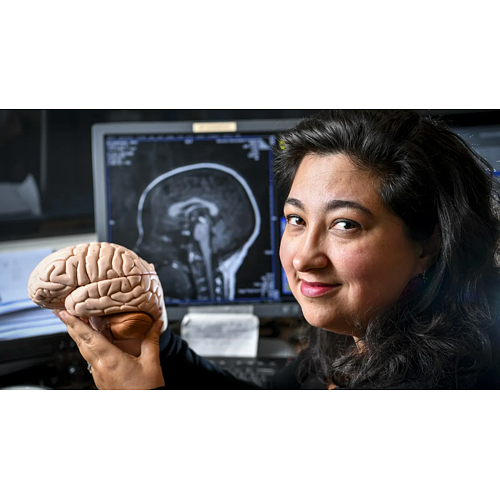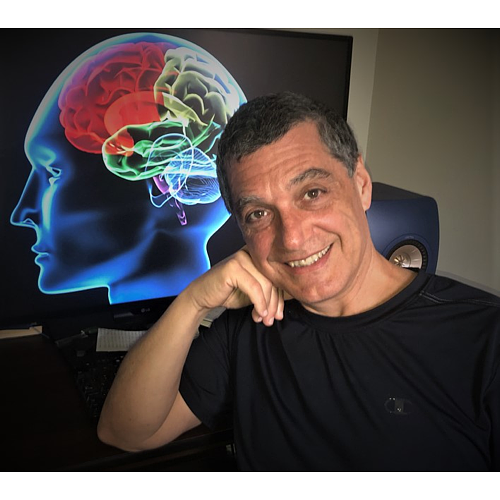PET and fMRI provide two separate and partially overlapping methods for neuroimaging. While PET relies on metabolic processing as measured by the dissipation of radioactive isotopes, MRI measures changes in blood oxygenation level (BOLD). Each method is useful for providing a quantitative metrics for brain function and dysfunction useful in the diagnosis and understanding of clinical brain disorders and normal development. The combination of methods adds values where the whole is greater than the sum of the parts. Much work in advancing research with combined PET-MRI has been done, and the invited experts discuss these advances and avenues of research.
Richard Carson
Talk Title: Imaging Synaptic Density in the Living Human Brain with PETRichard E. Carson as Professor of Biomedical Engineering and of Radiology and Biomedical Imaging. He is Director of the Yale PET Center and is also Director of Graduate Studies in Biomedical Engineering at Yale. Dr. Carson’s research interests are concentrated in 1) Development of next generation brain-PET systems, 2) New algorithms for PET image reconstruction, 3) Development of mathematical models for novel radiopharmaceuticals, 4) Use of receptor-binding ligands to measure drug occupancy and dynamic changes in neurotransmitters, 5) applications of PET tracers in clinical populations and preclinical models of neuropsychiatric disorders. http://petcenter.yale.edu/people/richard_carson.profile
Audrey P Fan
Talk Title: Leveraging simultaneity of PET/MRI for brain physiologyDr. Audrey Fan is an Assistant Professor of Biomedical Engineering and Neurology at the University of California, Davis. She received her Ph.D. in Electrical Engineering and Computer Science from M.I.T. and was a postdoctoral fellow and Instructor at Stanford University. Dr. Fan is a recipient of a K99/R00 Pathway to Independence Award from the NINDS (National Institutes for Neurological Disease and Stroke), and currently co-leads the Imaging Core for the Alzheimer’s Disease Research Center at UC Davis Health. Her overall mission is to bridge engineers in my research group with clinical radiologists, neurologists, and psychologists to promote healthy brain vascular function across the lifespan using cutting-edge medical imaging tools.
Andreas Hahn
Talk Title: Advantages of complementary fPET and fMRI in the assessment of task-specific brain responsesAndreas Hahn is Associate Professor in the Neuroimaging Labs, Department of Psychiatry and Psychotherapy at the Medical University of Vienna, Austria. His main focus is on the development of functional PET imaging, which enables the assessment of task-specific changes in glucose metabolism and neurotransmitter synthesis within a single scan. Combining this technique with simultaneous fMRI he aims to identify the underlying metabolic demands and neurotransmitter actions inherent to neuronal activation and brain connectivity.
Sharna Jamadar
Talk Title: The application of simultaneous PET/MR to the study of human brain functionSharna Jamadar is a Senior Research Fellow at the Turner Institute for Brain and Mental Health, and Monash Biomedical Imaging, at Monash University, Australia. She is a cognitive neuroscientist interested in applying neuroimaging techniques to understand how our life experiences change the brain. At Monash Biomedical Imaging, Sharna's team leads the development of simultaneous functional PET/MR imaging in humans at the facility. Sharna's team has developed novel PET/MR measures that provide high resolution mapping of the function, structure, and metabolic efficiency of the brain. For the first time, these new techniques allow researchers to study task-related changes in brain function and metabolism with a temporal resolution below 20sec. This work will have substantial implications for our understanding of how the brain dynamically uses energy during brain activity in response to tasks or at rest.
Bruce Rosen
Talk Title: PET/MR – looking forward and backDr. Rosen is Director of the Athinoula A. Martinos Center for Biomedical Imaging at Massachusetts General Hospital and Professor of Radiology at Harvard Medical School. He is also the Vice Chair of Research in the Department of Radiology at Massachusetts General Hospital. Among his many achievements in the biomedical sciences, Dr. Rosen is a pioneer in the field of functional neuroimaging. In the early 1990s, he oversaw development of the technique functional magnetic resonance imaging (fMRI), which measures the hemodynamic and metabolic changes associated with brain activity in both health and disease. More recently, his work has focused on the integration of fMRI data with information from other imaging modalities, including positron emission tomography (PET), magnetoencephalography (MEG) and noninvasive optical imaging. Many of the tools he has introduced are now used by research centers and hospitals around the world to study and evaluate patients with stroke, brain tumors, dementia, and neurologic and psychological disorders.
Christin Sander
Talk Title: From neuroreceptor binding to brain function with PET/fMRIDr. Christin Sander is an Assistant Professor at the Athinoula A. Martinos Center of Biomedical Imaging, Department of Radiology at Massachusetts General Hospital and Harvard Medical School. Dr. Sander obtained her Ph.D. in Electrical Engineering at Massachusetts Institute of Technology and received an MEng and MSc from Imperial College and University College London in Biomedical Engineering. Dr. Sander’s lab focuses on imaging neuroreceptors and neuromodulation using simultaneous PET/fMRI. Her research includes imaging dopamine receptors and neurotransmitter release and dynamic modulation during pharmacological challenges, together with imaging brain physiology. To this end, her lab uses preclinical, translational, and clinical approaches to study molecular mechanisms of neurotransmission and brain (dys)function in psychiatry, addiction, and other brain disorders.
Dardo Tomasi
The speed of dopamine increases modulates brain function and reward in humans: findings from simultaneous PET/fMRI studiesDardo Tomasi is a physicist and a Staff Scientist in the Laboratory of Neuroimaging (LNI) of the National Institute of Alcohol abuse and Alcoholism. He is interested in understanding the energy demand of human brain network organization from neuroimaging data in health and disease conditions. He also studies how reward circuits modulate brain function and behavior in humans using non-invasive neuroimaging tools such as simultaneous positron emission tomography (PET) and functional magnetic resonance imaging (fMRI).
PET and fMRI provide two separate and partially overlapping methods for neuroimaging. While PET relies on metabolic processing as measured by the dissipation of radioactive isotopes, MRI measures changes in blood oxygenation level (BOLD). Each method is useful for providing a quantitative metrics for brain function and dysfunction useful in the diagnosis and understanding of clinical brain disorders and normal development. The combination of methods adds values where the whole is greater than the sum of the parts. Much work in advancing research with combined PET-MRI has been done, and the invited experts discuss these advances and avenues of research.






